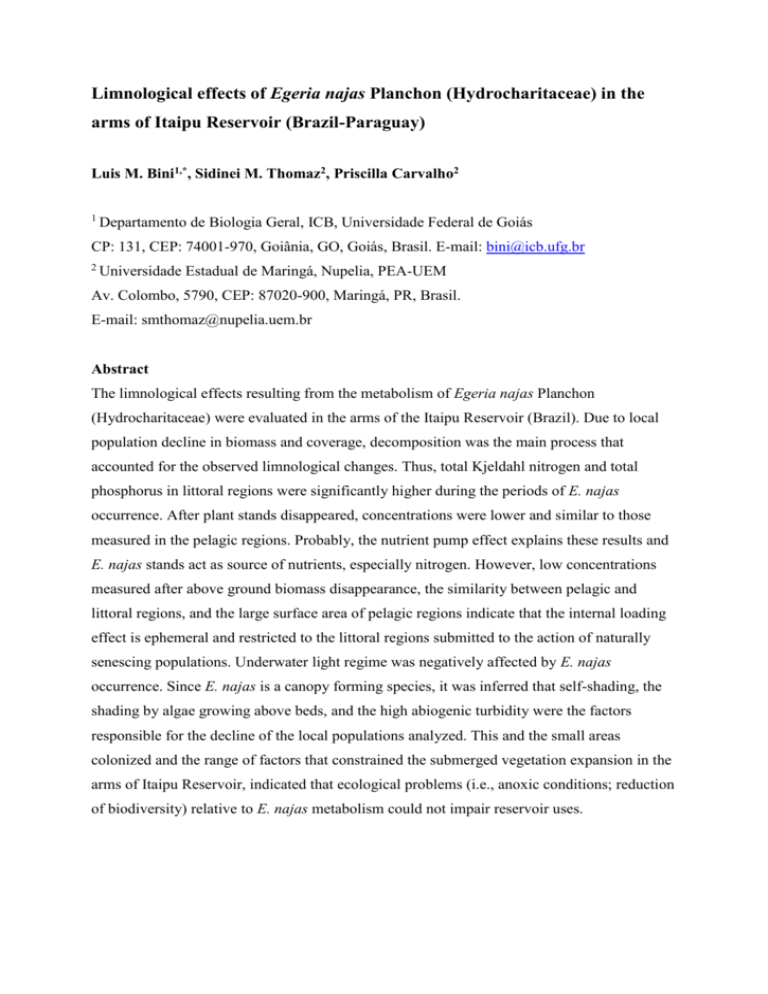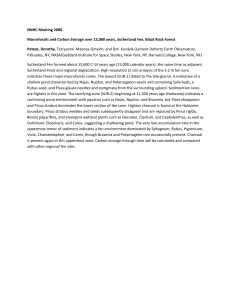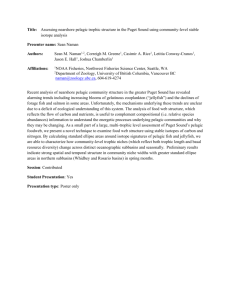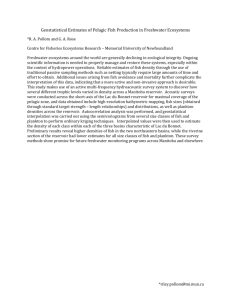Limnological effects of Egeria najas Planchon (Hydrocharitaceae) in
advertisement

Limnological effects of Egeria najas Planchon (Hydrocharitaceae) in the arms of Itaipu Reservoir (Brazil-Paraguay) Luis M. Bini1,*, Sidinei M. Thomaz2, Priscilla Carvalho2 1 Departamento de Biologia Geral, ICB, Universidade Federal de Goiás CP: 131, CEP: 74001-970, Goiânia, GO, Goiás, Brasil. E-mail: bini@icb.ufg.br 2 Universidade Estadual de Maringá, Nupelia, PEA-UEM Av. Colombo, 5790, CEP: 87020-900, Maringá, PR, Brasil. E-mail: smthomaz@nupelia.uem.br Abstract The limnological effects resulting from the metabolism of Egeria najas Planchon (Hydrocharitaceae) were evaluated in the arms of the Itaipu Reservoir (Brazil). Due to local population decline in biomass and coverage, decomposition was the main process that accounted for the observed limnological changes. Thus, total Kjeldahl nitrogen and total phosphorus in littoral regions were significantly higher during the periods of E. najas occurrence. After plant stands disappeared, concentrations were lower and similar to those measured in the pelagic regions. Probably, the nutrient pump effect explains these results and E. najas stands act as source of nutrients, especially nitrogen. However, low concentrations measured after above ground biomass disappearance, the similarity between pelagic and littoral regions, and the large surface area of pelagic regions indicate that the internal loading effect is ephemeral and restricted to the littoral regions submitted to the action of naturally senescing populations. Underwater light regime was negatively affected by E. najas occurrence. Since E. najas is a canopy forming species, it was inferred that self-shading, the shading by algae growing above beds, and the high abiogenic turbidity were the factors responsible for the decline of the local populations analyzed. This and the small areas colonized and the range of factors that constrained the submerged vegetation expansion in the arms of Itaipu Reservoir, indicated that ecological problems (i.e., anoxic conditions; reduction of biodiversity) relative to E. najas metabolism could not impair reservoir uses.






